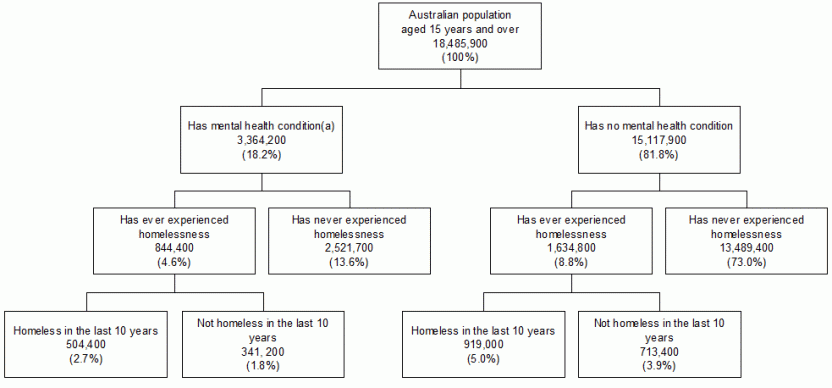For many people with a mental illness, achieving and maintaining a stable home can prove difficult [1]. Mental health issues combined with homelessness can have a large impact on individuals, families and communities, and can influence a person’s health, economic security, level of social support and level of access to, and use of, health services. The 2014 General Social Survey (GSS) provided the opportunity to examine the relationship between mental health and homelessness.
This publication examines data on people aged 15 years and over who reported having had an experience of homelessness in their lifetime, by whether or not they reported having a mental health condition. As the GSS only surveyed people currently living in private dwellings, data relates to people’s past experiences of homelessness only and does not include information on people who are currently homeless. For example it does not include: people currently living in shelters; people sleeping rough; people 'couch surfing' (staying temporarily with other households); people staying in boarding houses; nor does it specifically ask about the experience of living in severely crowded dwellings.
